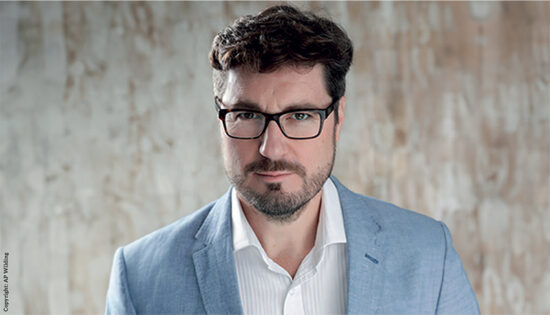The ever-changing trust landscape makes estate planning a sensitive and often difficult area in which to advise.
Coupled with the economic backdrop and the increased probability of divorce and bankruptcy occurring in the next generation, it is more important than ever that the devolution of assets to the next generation is properly planned for.
A close adviser-client relationship is crucial when looking at estate planning. For this reason, a thorough understanding of clients’ objectives and goals will be key.
Considerations will include:
- The ability to allow the client to control the distribution of their wealth after their death.
- Implementing strategies that protect family assets from exposure to risks such as creditors and divorce proceedings.
- Maintaining privacy. Some clients will also prefer the extent of the family wealth and assets be withheld from future generations until absolutely necessary.
- Using robust strategies to minimise or eliminate inheritance tax (IHT) liability for not only the client, but their chosen beneficiaries as well.
Skipping a generation
Gifting money to grandchildren is one of the most efficient ways of avoiding IHT, particularly for those who are financially secure.
Not only will it enable the client to potentially reduce their own estate’s liability to the tax man but it can also, in effect, skip a generation in terms of IHT.
There are a number of ways of giving money to grandchildren without incurring tax.
Each child can receive £250 a year by way of gift, which is tax exempt. Alternatively the client could choose to utilise their £3,000 a year tax exempt gift allowance to gift money, but this is instead of, not as well as, the £250 a year.
The £3,000 tax exempt gift allowance is available to each grandparent each year and if not used can be carried forward for one year only. In the event that a grandchild gets married each grandparent can give a £2,500 wedding gift to celebrate the happy occasion, again with no tax to pay on such a gift.
Flexibility and control
Many grandparents will be reluctant to make substantial outright gifts of capital, this is generally due to loss of control and practical concerns about a young person’s lack of experience and their likely financial and emotional immaturity.
Where proper planning has not occurred when setting up a trust, there is a risk that once the grandchild reaches the age of 18, they will have unfettered access to the trust property.
This generates numerous concerns due to the child’s possible immaturity and susceptibility to undue influences. Many children of this age are yet to work or go to university, much less prepared to prudently manage a significant amount of money or property.
Gifting assets into a discretionary trust enables the client to ensure the trustees appointed will be able to hold those assets for the benefit of the grandchildren and to distribute those assets in the appropriate circumstances, often in accordance with a Letter of Wishes.
However, in order to benefit from this control and flexibility it is important to understand the IHT implications.
No IHT should be payable when the gift into trust is made, as long as the value of the gift is below the client’s available nil-rate band for IHT purposes.
The limit is currently £325,000 (frozen until 2017/2018) and as long as the client survives seven years from the date of the gift, its value will not form part of their estate for IHT purposes. If the client were to die within seven years of making the gift, its original value would be taken into account when calculating the IHT due on death.
On every 10th anniversary, a tax charge of up to 6% may arise on the value of the trust assets that are greater than the nil-rate band at the time. In addition an exit charge may also apply where distributions are made to the beneficiaries.
However, the biggest disincentive to the use of a discretionary trust is that the settlement of sums in excess of the nil-rate band is subject to an immediate charge at 20%.
Settle your affairs
In addition, in recent proposals, HMRC has suggested a single ‘settlement’ nil-rate band as part of its latest consultation on simplifying relevant property IHT. The new rules would mean that each settlor is entitled to a single ‘settlement nil-rate band’ (SNRB) separate from and unconnected to their personal nil-rate band.
They will decide how their SNRB is to be allocated between the settlements they create. HMRC has also proposed a standard 6% tax rate to be used in the calculation of 10-year and exit charges.
This would be prohibitive for the use of multiple trusts which had been an effective IHT planning strategy.
Interestingly, these proposals have led to suggestions that the use of direct gifts may once again become the favoured tax planning solution.
Bare essentials
Bare trusts, also known as absolute trusts, are the simplest form of trust.
The gift is classed as a potentially exempt transfer (PET) for IHT purposes. As long as the donor survives for seven years from the date of the gift, it falls outside of their estate, it will also not be subject to the IHT considerations associated with discretionary trusts.
Broadly, a bare trust is transparent for income tax and capital gains tax purposes with the trust’s income and gains assessed directly on the beneficiary rather than the creator or trustees of the trust. This will be the case unless a parent creates the trust, in which case the income that arises is treated as the income of the parent if it is paid to, or for the benefit of, an unmarried minor child of the parent.
The ‘parental settlement rules' only apply to trusts where a minor child can benefit from the trust and the donor parent is excluded. The rules do not therefore apply once the child turns age 18.
If the income arising from all parental settlements made by a parent to a child is less than £100, the child’s trust income is not assessed as income accrued to the settlor parent. Once the £100 limit is exceeded, however, the total income will be taxed as the settlor parent’s for income tax purposes.
Although the ‘parental settlement rules' apply to trusts set up by parents for the benefit of their minor children, they do not apply to trusts set up by grandparents – or indeed anyone else – in which case any income paid to the child will be taxed as income of that child.
This can be particularly advantageous for grandparents wishing to assist with school fee planning for their grandchildren as well as benefiting from favourable IHT treatment.
The principal concern with such trusts however, is the fact the beneficiary will be immediately entitled to the settled asset and, on attaining 18, can call for the asset to be transferred into their name.
The fact the beneficiary is absolutely entitled to the funds also means the trust offers no protection of the funds from third parties, for example in the event of divorce or bankruptcy.
Providing a legacy
One possible course of action would be to look at a structure which would require the use of a carefully drafted single premium investment bond. Such a structure would be set up using a bare trust thereby creating a PET for IHT purposes.
The structure would allow the grandparent to make a gift to their chosen beneficiary, but will enable the grandparent to ensure their grandchild will not gain access to the trust too early.
Suitable structures should be drafted specifically so as to not enable the grandchild access until a specific age as determined by the grandparent, but to also allow some access prior to that age for certain events such as facilitating school and university fees.
In order to help secure the trust fund, an adult beneficiary could be given a nominal interest in the trust fund.
Their presence will help to ensure that the grandchild would be unable to access the trust fund too early.
Estate planning is a complex area and different solutions will suit different clients.
Advisers must take into account many factors including the size of the gift and the client’s personal objectives to ensure the legacy is passed to beneficiaries in the most controlled and tax efficient manner possible.








